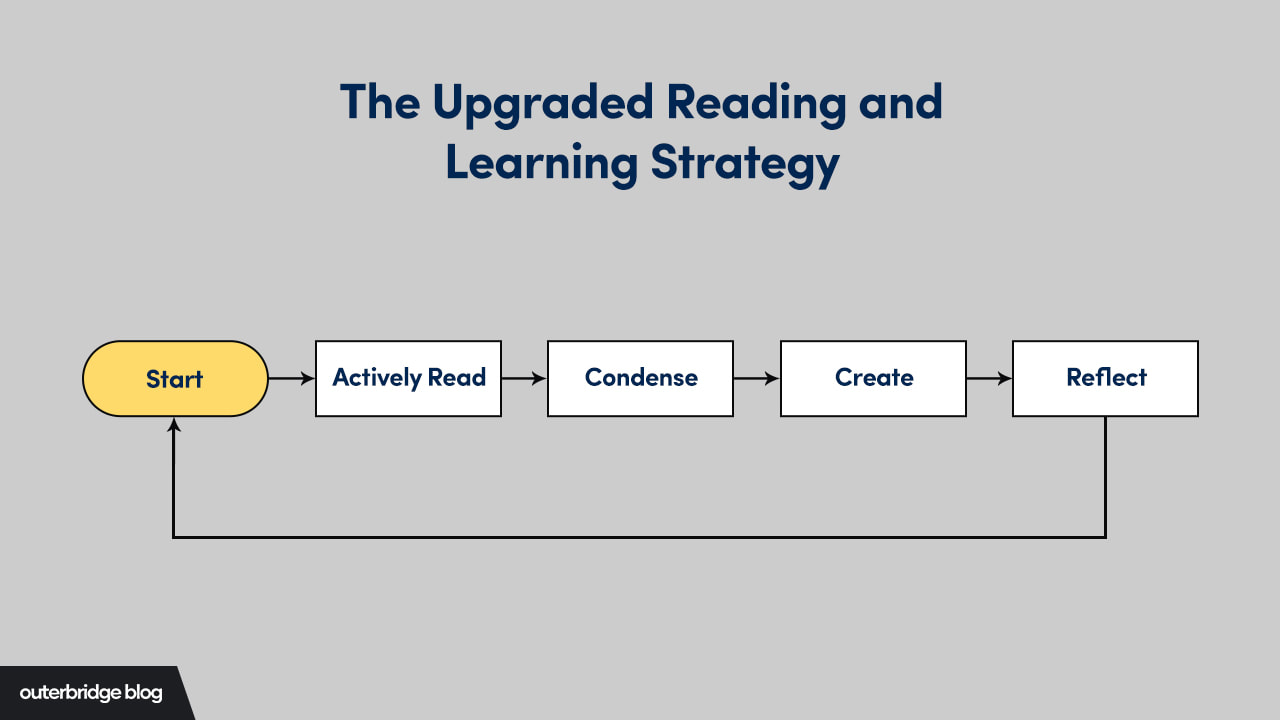|
Have you ever read through a book, only to discover that you can’t remember more than a few main points?
The problem isn’t you. The problem is your reading methods. Many people learn the basics of reading in grade school, and add a few more tricks, like underlining and rereading, in high school. And then they stop developing their reading abilities altogether. They don’t learn time-tested methods and strategies for becoming better readers. These methods can help you remember more, build deeper understanding, and synthesize knowledge. This article outlines a system, which I call the Upgraded Reading and Learning (URL) Strategy, that will level up your reading skills.
Learning how to learn is a crucial skill for the 21st century. It's also a skill that few people fully understand.
It can make you flexible, adaptable, and future-proof your career. Beyond that, learning how to learn infuses life with more potential and excitement. Imagine being able to acquire a new language, take up a new sport, or learn to play an instrument in less time, by using the most effective, research-backed methods available. Learning How to Learn, The Massive Online Open Course (MOOC) led by professors Barbara Oakley and Dr. Terrence Sejnowski, lays out these methods and strategies in plain language. While the course itself typically takes four weeks, I was able to complete it in just a few days, using some of the methods I picked up from reading Scott Young's book Ultralearning. You can too. Because teaching and creating are such powerful learning tools, I distilled the main concepts of the course into a handy infographic. While it doesn't include everything from the MOOC, it does offer a basic primer on the course content. Hopefully, it gives you a framework to improve your own learning, and gives me something to look back at so that I don't forget too much! Here it is:
If you want a more in-depth perspective for improving your learning skills, or if you want to overlearn the concepts above, keep reading to see my detailed notes on the course.
In his adolescence, Benjamin Franklin was acutely aware of his poor writing ability, and wanted to do something about it. And so, he gathered up copies of his favourite periodical, The Spectator, and began reproducing parts of it from memory, along with scraps of notes that he had taken.
By engaging in this method, Franklin had unwittingly stumbled upon one of the most effective practice strategies ever conceived. It can be applied to any craft, and generates remarkable results. Combined with computers and basic word processing software, you can use this strategy to dramatically improve your writing skills, and accurately document your progress. Like a football player watching game tape or a chess master reviewing an endgame, Ben Franklin's technique allows you to see where your writing falls short through immediate feedback, and provides you with more elaborate mental representations of good writing that you can then use to write better sentences, emails, essays, and books. Let's explore the method, updated to incorporate modern technology, that will unlock your latent power as a writer. |




 RSS Feed
RSS Feed
